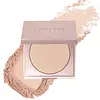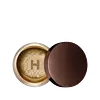Lawless Skin-Smoothing Talc-Free Perfecting Powder Versus Hourglass Cosmetics Veil Translucent Setting Powder
What's inside
What's inside
 Key Ingredients
Key Ingredients

 Benefits
Benefits

No benefits
 Concerns
Concerns

 Ingredients Side-by-side
Ingredients Side-by-side

Synthetic Fluorphlogopite
Zinc Stearate
Cosmetic ColorantSqualane
EmollientPerlite
AbsorbentCaprylyl Glycol
EmollientEthylhexylglycerin
Skin ConditioningButyl Avocadate
Skin ConditioningBisabolol
MaskingHelianthus Annuus Seed Oil
EmollientGlycerin
HumectantWater
Skin ConditioningTocopherol
AntioxidantLycium Barbarum Fruit Extract
AstringentNasturtium Officinale Extract
PerfumingTropaeolum Majus Extract
AntimicrobialSorbic Acid
PreservativeCI 77891
Cosmetic ColorantIron Oxides
CI 19140
Cosmetic ColorantCI 77163
Cosmetic ColorantCI 77742
Cosmetic ColorantMica
Cosmetic ColorantSynthetic Fluorphlogopite, Zinc Stearate, Squalane, Perlite, Caprylyl Glycol, Ethylhexylglycerin, Butyl Avocadate, Bisabolol, Helianthus Annuus Seed Oil, Glycerin, Water, Tocopherol, Lycium Barbarum Fruit Extract, Nasturtium Officinale Extract, Tropaeolum Majus Extract, Sorbic Acid, CI 77891, Iron Oxides, CI 19140, CI 77163, CI 77742, Mica
Ingredients Explained
These ingredients are found in both products.
Ingredients higher up in an ingredient list are typically present in a larger amount.
This synthetic powder is used to add a pearly/white color in cosmetics.
Mica is a naturally occurring mineral used to add shimmer and color in cosmetics. It can also help improve the texture of a product or give it an opaque, white/silver color.
Serecite is the name for very fine but ragged grains of mica.
This ingredient is often coated with metal oxides like titanium dioxide. Trace amounts of heavy metals may be found in mica, but these metals are not harmful in our personal products.
Mica has been used since prehistoric times throughout the world. Ancient Egyptian, Indian, Greek, Roman, Aztec, and Chinese civilizations have used mica.
Learn more about MicaSorbic Acid is a preservative. It is the most commonly used food preservative in the world.
Sorbic Acid is a natural antibiotic and highly effective at preventing the growth of fungus. It is less effective against bacteria.
Potassium Sorbate, another commonly-used preservative, is the potassium salt of Sorbic Acid.
Sorbic Acid may worsen eczema. We recommend speaking with a professional if you have any concerns.
Potassium sorbate and sorbic acid can be found in baked goods, cheeses, dried meats, dried fruit, ice cream, pickles, wine, yogurt, and more.
Learn more about Sorbic Acid